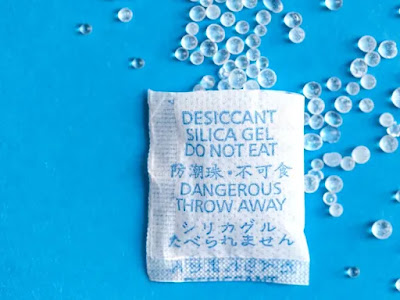A desiccant is a substance that is used to absorb moisture and humidity in the air. Desiccants can be found in a wide range of products and industries, from food packaging and electronics to pharmaceuticals and shipping containers. This blog post will explore what a desiccant is, the different types of desiccants available, and the benefits they offer.
What is a Desiccant?
A desiccant is a substance that is used to absorb moisture and humidity in the air. Desiccants can come in the form of solid, liquid, or gel and can be made from a variety of materials, such as silica gel, clay, and activated charcoal. They work by attracting and trapping moisture molecules, which helps to keep the surrounding environment dry and free from humidity.
Different Types of Desiccants
Silica Gel
Silica gel is one of the most common types of desiccants and is made from silicon dioxide. It is a highly porous substance that can absorb moisture effectively and is often used in small packets to protect products such as electronics, food, and pharmaceuticals.
Clay Desiccants
Clay desiccants are made from natural clay minerals and are known for their high absorption rate and low cost. They are commonly used in shipping containers and other industrial applications.
Activated charcoal
Activated charcoal desiccants are made from carbon that has been treated with oxygen to increase its porosity. They are highly effective at absorbing moisture and odors and are often used in air purifiers and other air filtration systems.
Molecular Sieve
Molecular sieve desiccants are made from microporous beads that are able to absorb moisture by selectively adsorbing water molecules based on their size. They are commonly used in industrial and research applications where low dew point and high efficiency are needed.
Benefits of Desiccants
Preservation of Products
Desiccants is commonly used in packaging to protect products from moisture damage. This can help to extend the shelf life of products and prevent spoilage, which can save businesses money and reduce waste.
Protection of Electronics
Desiccants can also be used to protect electronics from moisture damage. This can help to prevent short circuits and other problems that can occur when electronics become wet.
Improved Air Quality
Container Desiccant can also be used to improve air quality by absorbing moisture and humidity in the air. This can help to reduce the growth of mold and mildew, which can improve indoor air quality and reduce the risk of respiratory problems.
Cost-effective Solutions
Desiccants are cost-effective solutions for moisture control. They can often be reused multiple times and are much cheaper than other alternatives.
Conclusion
In conclusion, desiccants are substances that are used to absorb moisture and humidity in the air. They come in various forms and materials, such as silica gel, clay, activated charcoal, and molecular sieve. Desiccants can offer various benefits such as the preservation of products, protection of electronics, improved air quality, and cost-effective solutions. They are widely used in packaging, shipping, electronics, and other industries.

Comments
Post a Comment